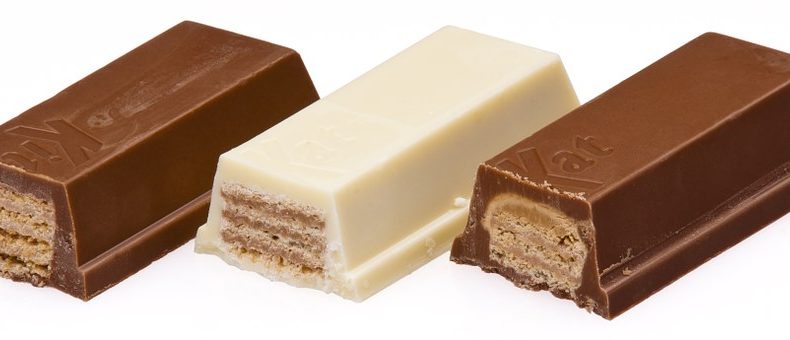
KitKat forced to remove shape TM as Appeal Court upholds HC ruling
The UK Court of Appeal (CoA) has upheld the decision of the High Court (HC) that the shape of Nestlé’s four finger KitKat chocolate bar is not capable of trade mark registration. This decision, much like the HC’s ruling, was focused upon the fact that Nestlé was unable to demonstrate that the shape had acquired a distinctive character in relation to certain confectionary goods in Class 30.
Background
This is the latest in a string of ‘tit for tat’ battles between the confectionary rivals, Nestlé and Cadbury.
The shape debate commenced when Nestlé sought to register at the UKIPO its well-known four finger shape chocolate bar, in order to secure a monopoly on products of that shape. Rather interestingly, the mark in the application differed significantly from what Nestlé was offering in market. It did not comprise of the KitKat logo, which is usually embossed on each finger, nor did it consist of the packaging that the bar is sold in.
Cadbury subsequently opposed the application and argued that the shape lacked the required distinctive character to act as an indication of origin. In response, Nestlé argued that through use, it had acquired a distinctive character. It was successful in its arguments for cakes and pastries, but not for the remaining Class 30 goods. As such, Nestlé appealed the UKIPO’s decision to the HC, which in turn referred a number of questions to the Court of Justice of the European Union (CJEU). This was with a view to obtaining confirmation as to how acquired distinctiveness is to be assessed in relation to shape trade mark applications.
Following guidance from the CJEU, Nestlé’s appeal was dismissed in the HC on the grounds that the Hearing Officer had applied the correct law and reasoning. That is, Nestlé had not promoted the chocolate bar’s shape as one of its unique selling points and, as it had distributed it in opaque wrapping, it did not reveal its shape design at the point of sale. It was therefore held that consumers only rely on the word mark ‘KitKat’ and the other word/pictorial marks to identify the trade origin of the products and not the shape.
CoA
Nestlé appealed the HC decision to the CoA and argued that the test should have been whether a significant proportion of the relevant consumers had come to perceive four finger chocolate bars as originating from Nestlé.
Whilst the CoA conceded that the relevant consumer may recognise the 3D shape as a KitKat bar, it held that such a perception was not sufficient to prove that the shape alone acted as an indication of origin. Instead, Nestlé had to demonstrate that a significant proportion of the relevant class of consumers perceived the goods designated by 3D application as originating from it.
As Nestlé could not satisfy this requirement, the CoA held that the 3D application failed the acquired distinctiveness test set out above.
Conclusion
Although ‘shapes’ are explicitly mentioned in the Trade Marks Act 1994 as being signs capable of registration, this decision confirms what has long being suspected; it is extremely difficult for entities to achieve registration for the shape of goods in the absence of any graphical or word element. This is because consumers are not in the habit of making assumptions about the origin of goods purely on shape alone. It seems that it will only be in exceptional circumstances that shape applications will meet the high distinctiveness threshold, yet the threshold is not insurmountable.
To make this threshold obtainable, potential shape trade mark applicants should first educate their consumers into understanding that the shape in question is itself a trade mark, as opposed to being just a feature of the product, before any application is made. Emphasis on the identity and uniqueness of the shape should form part of any promotional activity relating to the products. Doing so could help with overcoming potential ‘distinctiveness’ objections later down the line. Examples of such progressive marketing and promotion can be found and the companies behind such campaigns are proving successful in securing acceptance of their shape marks.
It remains to be seen whether the CoA decision is the last straw to break the camel’s back or whether Nestlé will continue and appeal to the Supreme Court.
As the law appears very consistent on this issue, maybe Nestlé should forget about Court for now and instead, offer for sale a four finger bar in transparent packaging or where the shape alone is heavily promoted in advertising materials. This would undoubtedly begin the process of educating the consumer about its ‘distinctive’ shape and therefore, increase the chances of securing registration following a re-filing of the same trade mark. However on the flip side of the coin, competitors may have a window of opportunity to introduce competitive products of the same shape.



